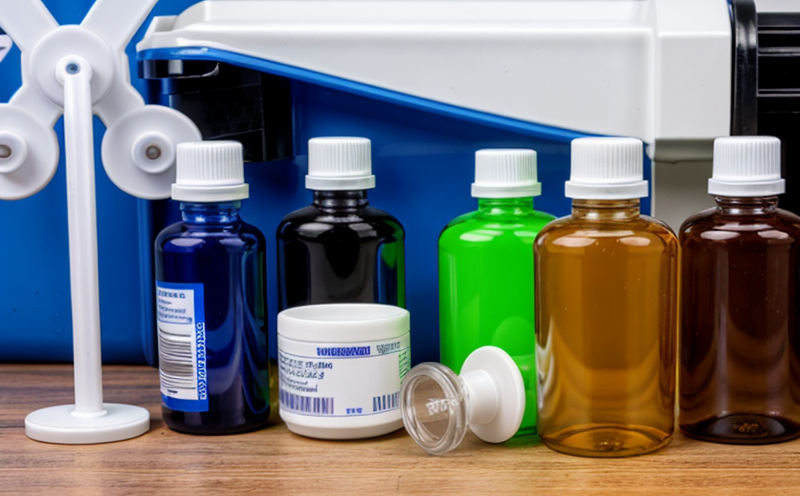ASTM D8300 Controlled Substances in Pharmaceutical Waste
The ASTM D8300 test method is a critical tool used to ensure that pharmaceutical waste does not contain controlled substances. This test is particularly important for quality managers, compliance officers, R&D engineers, and procurement professionals who are responsible for ensuring regulatory compliance and environmental sustainability.
The primary objective of the ASTM D8300 test is to determine the presence and concentration levels of controlled substances in pharmaceutical waste streams. The test method involves a series of steps designed to accurately identify these substances and ensure that they do not exceed allowable limits set by regulatory bodies such as the Environmental Protection Agency (EPA) and the Food and Drug Administration (FDA).
The ASTM D8300 test is typically conducted on solid waste from pharmaceutical manufacturing processes, packaging materials, and other related wastes. The process involves several key steps:
- Sampling of the waste stream
- Preparation of sample extracts for analysis
- Analysis using high-performance liquid chromatography (HPLC) or gas chromatography-mass spectrometry (GC-MS)
- Quantification and comparison with regulatory thresholds
The results from the ASTM D8300 test are crucial for several reasons. First, they provide assurance that pharmaceutical waste does not contain levels of controlled substances that could pose a risk to human health or the environment. Second, compliance with this test is necessary for avoiding fines and penalties associated with non-compliance. Lastly, it ensures that companies can continue operating within legal frameworks.
The ASTM D8300 test method is widely recognized in the pharmaceutical industry as a best practice for waste management. By using this standard, companies demonstrate their commitment to environmental stewardship and regulatory compliance. This commitment not only protects public health but also enhances brand reputation and operational efficiency.
In addition to its regulatory importance, the ASTM D8300 test contributes significantly to sustainability efforts. Proper identification of controlled substances in waste allows for more effective disposal methods, reducing the environmental impact of pharmaceutical manufacturing processes. This aligns with broader corporate goals related to green chemistry and sustainable development.
Eurolab Advantages
At Eurolab, we pride ourselves on providing comprehensive testing solutions for waste management and recycling across various sectors. Our expertise in pharmaceutical waste testing is rooted in our commitment to delivering accurate, reliable results that meet the highest industry standards.
- Accurate Testing: Our state-of-the-art laboratories equipped with advanced analytical instruments ensure precise measurement of controlled substances in pharmaceutical waste.
- Compliance Assurance: With our deep understanding of regulatory requirements, we help clients stay ahead of changing laws and guidelines related to pharmaceutical waste management.
- Expertise and Experience: Our team comprises highly skilled professionals with extensive experience in environmental testing, ensuring that each project receives tailored attention and support.
- Seamless Integration: We work closely with our clients to integrate our services into their existing processes, minimizing disruption while enhancing overall performance.
By choosing Eurolab for your ASTM D8300 controlled substance testing needs, you can rest assured that you're partnering with a leader in the field who understands both the technical and strategic aspects of waste management.
Why Choose This Test
- Avoid Legal Penalties: Ensure compliance with stringent regulations regarding controlled substances in pharmaceutical waste streams.
- Protect Public Health: By identifying and removing harmful substances from the environment, you contribute to safer communities.
- Elevate Brand Reputation: Demonstrating a commitment to responsible waste management practices enhances your company's image among stakeholders.
- Sustain Operational Efficiency: Regular testing helps maintain optimal production conditions and reduces risks associated with non-compliance.
These benefits underscore why the ASTM D8300 test is an essential component of any comprehensive waste management strategy. It not only ensures regulatory adherence but also fosters a culture of environmental responsibility within organizations.
Environmental and Sustainability Contributions
The ASTM D8300 controlled substances test plays a pivotal role in promoting sustainability and protecting the environment. By identifying and managing hazardous waste, this testing method helps reduce the ecological footprint of pharmaceutical manufacturing processes.
One of the primary environmental contributions of the ASTM D8300 test is its ability to prevent the release of harmful chemicals into water bodies, soil, and air. This reduces contamination risks and supports efforts towards cleaner ecosystems. Additionally, by ensuring proper disposal practices, this testing contributes to broader sustainability goals such as resource conservation and waste reduction.
Moreover, adherence to ASTM D8300 standards promotes responsible use of natural resources throughout the pharmaceutical supply chain. It encourages manufacturers to adopt more sustainable production methods and sourcing strategies, thereby fostering a circular economy approach within the industry.





